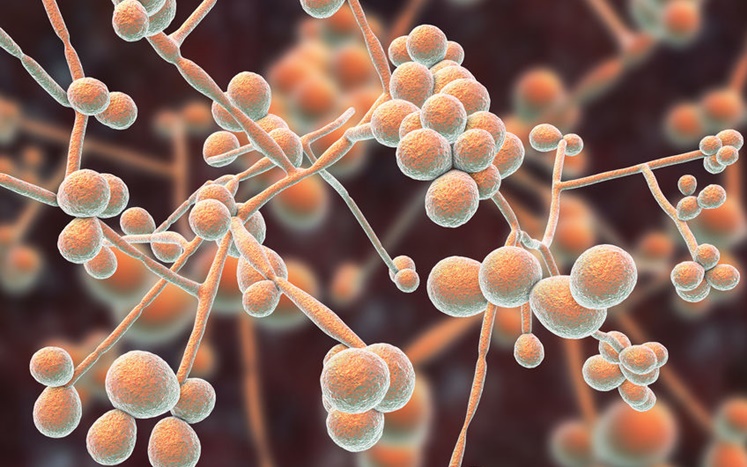STRATEGIES TO TREATING DIGESTIVE COMPLAINTS THAT MAY ARISE AFTER SUMMER HOLIDAYS

For many people, fall is the time to get back on track after summer. Summer months may include more sugar, even in the form of fruit. There may be more alcoholic drinks or sweetened drinks. After summer I do notice more patients coming into my clinic complaining of increased gas, bloating, weight gain around the stomach and sometimes constipation. This is a great time to see if yeast (or candida) may be one of the culprits causing their stomach problems.
WHAT IS YEAST
Yeast belongs to a class of organisms that also include mold and mushrooms. One type of yeast organism commonly found in the digestive tract of human beings is Candida. In fact, yeast may be found in approximately 80% of people. A healthy digestive tract can keep yeast under control. Our friendly bacteria (or probiotics), a clean diet low in processed sugars and fruit, as well as a healthy epithelial cells that line the intestines work together to keep the yeast under control.
SYMPTOMS
Problems arise when there are imbalances in the digestive tract that may be caused by dietary changes. Summer fruits tend to be higher in sugar, more fermented alcoholic beverage such as wine and beer, as well as increased processed foods can change the health of the intestinal tract and allow bacteria and fungus to grow. The result may be increased gas, increased abdominal bloating, loose stools or constipation and body symptoms such as brain fog, headaches, muscle aches, fatigue, itchy skin and vaginal yeast infections.
The good news is there are some great treatments for an overgrowth of yeast in the body. Both pharmaceutical and natural remedies work great.
TREATMENT
Individuals with digestive problems tend to do better when supporting the liver, gallbladder, digestive enzymes, bile flow and stomach acid. Supporting these parts of digestion (what I label as phase 1 digestive support) generally improves treatment outcomes and may help prevent relapses. You may have a chronic problem and summer foods have exacerbated it. Get tested! We can investigate underlying issues in almost all areas of digestion through laboratory testing.
Individuals with digestive problems also generally do better when they are supported nutritionally. This includes diet changes, certain supplements such as a good vitamin B complex, vit C, vit D, magnesium, omega 3 EFA and a good multistrain probiotic.
Candida and some bacteria produce enzymes that may break down the lining of the gut. Supplements such as vitamin B6, biotin and lipoic acid may help to reduce this interaction. In some women biotin may be effective in treating chronic vaginal yeast infections. (1)
Other natural supplements that may be effective in treating yeast (or candida) include Garlic (2), berberine (4), caprylic acid (3), and olive leaf.
A Pharmaceutical medications that is quite effective in treating yeast infections in the digestive tract include Nystatin. It may be a good option for long term due to its low systemic absorption. Please discuss with your Naturopathic Doctor.
Diflucan is another medication with higher systemic absorption. It may be effective for body symptoms. It is generally used short term, commonly 2-4 weeks. Again, please discuss with your Naturopathic Doctor.
If you have been experiencing digestive symptoms, I highly suggest getting tested to find out the underlying cause. Our comprehensive digestive assessment is a great place to start. From this comprehensive evaluation your Naturopathic Doctor can determine the next steps to treating your digestive symptoms and preventing relapses. Contact us today!

Yours in health,
Dr Tasreen Alibhai, ND

Diet is an important role in getting rid of a Candida overgrowth. There is a lot of conflicting information in the natural blogosphere on what exactly to eat and many Candida diets are needlessly restrictive. I’m not a fan of super restrictive elimination diets, when unwarranted, as they can cause emotional distress, may lead to binging and an unhealthy relationship with food which will make it very difficult to overcome Candida overgrowth (or any gut microbiome imbalance for that matter). Here is my non-nonsense approach to fighting Candida overgrowth with diet:
Make sure you’re eating enough protein
Protein isn’t just for muscles: it’s the backbone of your immune system which we want to be strong and healthy for fighting Candida overgrowth. It will also keep your blood sugar nice and balanced (no more energy slumps!) and keep sugar cravings at bay.
It’s easy to fall behind on your protein intake if you aren’t making a conscious effort to include it every time you eat. Aim for .75 - 1 gram per pound of bodyweight depending on your exercise levels. Fish, poultry, lean meats, eggs, high quality protein powders (plant-based for vegans) are good options.
Find fibres & starches that you can tolerate
If you’ve Googled “Candida diet” it’s likely that you’ve read that you must avoid all carbohydrates. This is one of the most common (and potentially damaging) myths about Candida. A diet that contains an excess amount of sugar will create and/or worsen symptoms but this does not mean you have to avoid all carbohydrates. The key is to find the type of carbohydrates in the right amount for you. Here is a good starting point for meals: start with a base of lightly cooked leafy greens (i.e. spinach, kale, arugula or romaine lettuce) and add some cooked starchy vegetables. Assess how you feel after eating. Many people with a gut microbiome imbalance will tolerate low FODMAP vegetables best. FODMAP is an acronym for types of carbohydrate molecules that cause digestive distress in some people. Low FODMAP vegetables include carrot, celery, eggplant, endive, bell pepper, parsnip, pumpkin, tomato, turnip and zucchini.
Increase healthy fats
Healthy fats are an important part of a balanced diet but there are certain fats to focus on specifically while you are addressing Candida overgrowth:
Essential fatty acids, specifically DHA & EPA: Candida depletes EFA’s. Consume oily fish (mackerel, salmon, sardines) several times per week to increase your EPA and DHA intake. For a vegan option, seaweed and algae are a good source of EPA & DHA. Nori is the seaweed used to make sushi. Seaweed is a tasty, crispy snack. Chlorella and spirulina can be added to smoothies or juices.
Fats with anti-Candida activity:coconut oil and olive oil. Coconut oil contains two compounds-monolauric acid and caprylic acid- that have antimicrobial properties while olive oil contains oleic acid.
Reduce white sugar and white flour
While some carbohydrates can make up part of your Candida diet, refined carbohydrates that contain white sugar and/or flour should be avoided. They pack a double punch for an already compromised gut microbiome: they are the preferred fuel source for Candida and they tax the immune system, making it harder to fight the yeasty beasties.
Avoid alcohol
Candida and alcohol have one thing in common: the end result in your system is an increase in aldehyde, the compound that makes you feel hungover. Your liver needs some love while Candida overgrowth is addressed and drinking during treatment is like fighting a grease fire with water.

Need some extra help tailoring your Candida diet? Book now with Jessica for a customized meal plan.
Jessica Mosiuk


